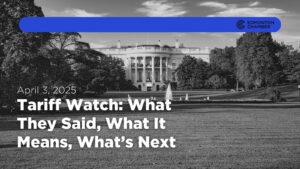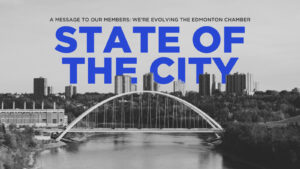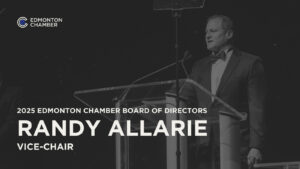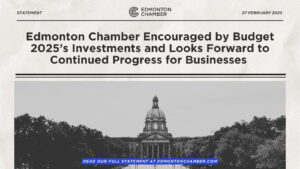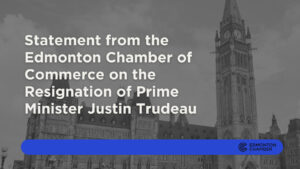February 20, 2025
Bridges, Business, and Bottlenecks: Let’s Keep Edmonton Moving
By Heather Thomson, VP, Economy & Engagement
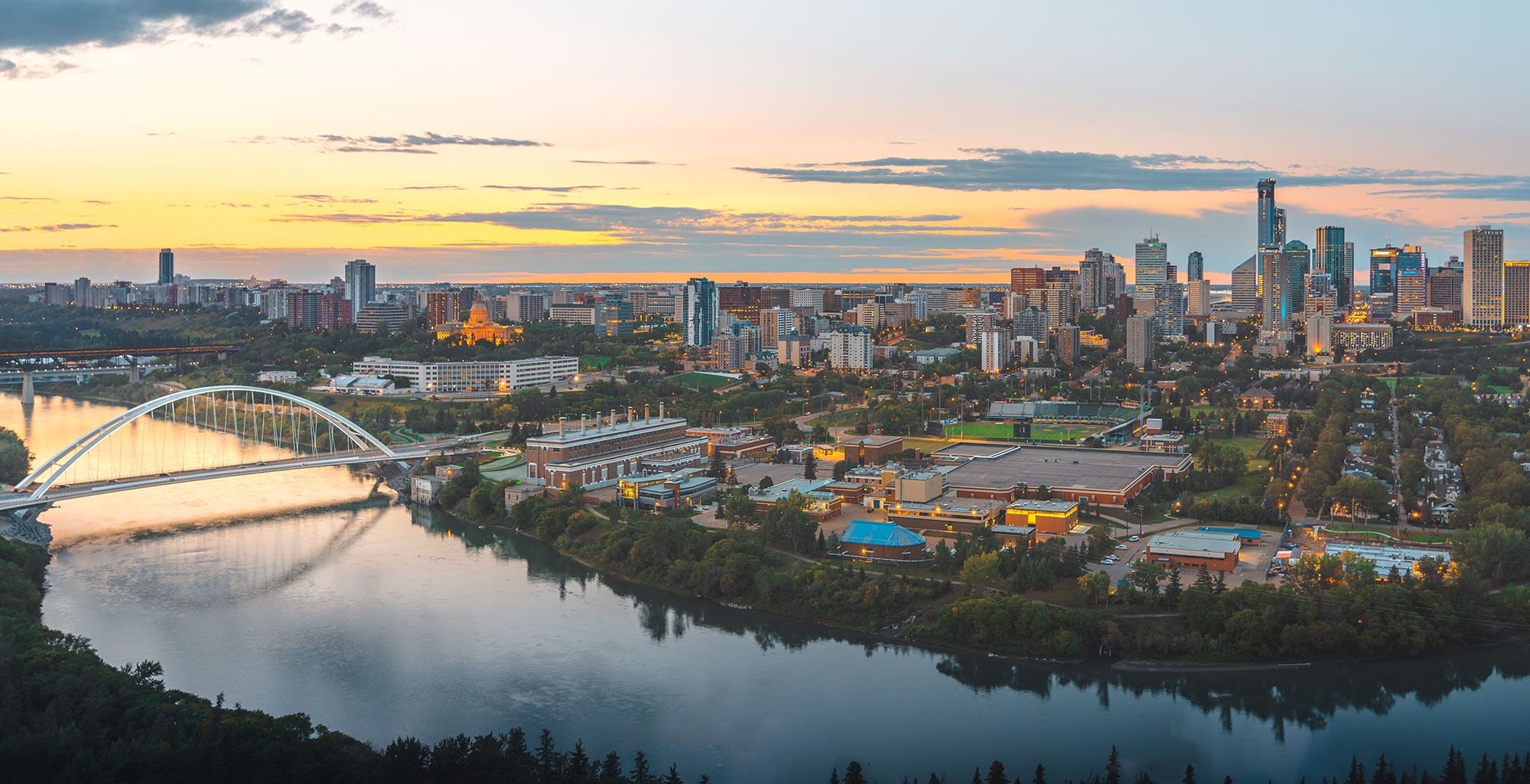
Edmonton’s Bridges Are More Than Infrastructure—They’re Economic Lifelines
Edmonton’s bridges do more than connect neighbourhoods—they connect businesses to customers, workers to jobs, and industries to markets. They are the economic arteries of our city, supporting the daily movement of people, goods, and services.
However, Edmonton is on the verge of severing these connections.
This year alone, Dawson Bridge and the southbound Low Level Bridge will partially close, while the Wellington Bridge over 102 Avenue will shut down completely for replacement in the fall. At the same time, roadwork on the west leg of the Valley Line LRT, upgrades to parts of Jasper Avenue and 99 Street, and the 103A Avenue pedway will significantly restrict movement in and out of the core.
The High Level Bridge that carries more than 27,000 vehicles every day will be shut down for repairs in 2027 – can you even imagine the impact that will have for commuters heading to the offices, to grab dinner with their friends, or heading to the Ice District to watch a game? The City is even considering converting Walterdale Bridge to a temporary two-way span to alleviate congestion.
According to city estimates from May 2024, these closures and detours could add 15 to 30 minutes to trips from the suburbs during peak hours—a costly delay for both businesses and commuters.
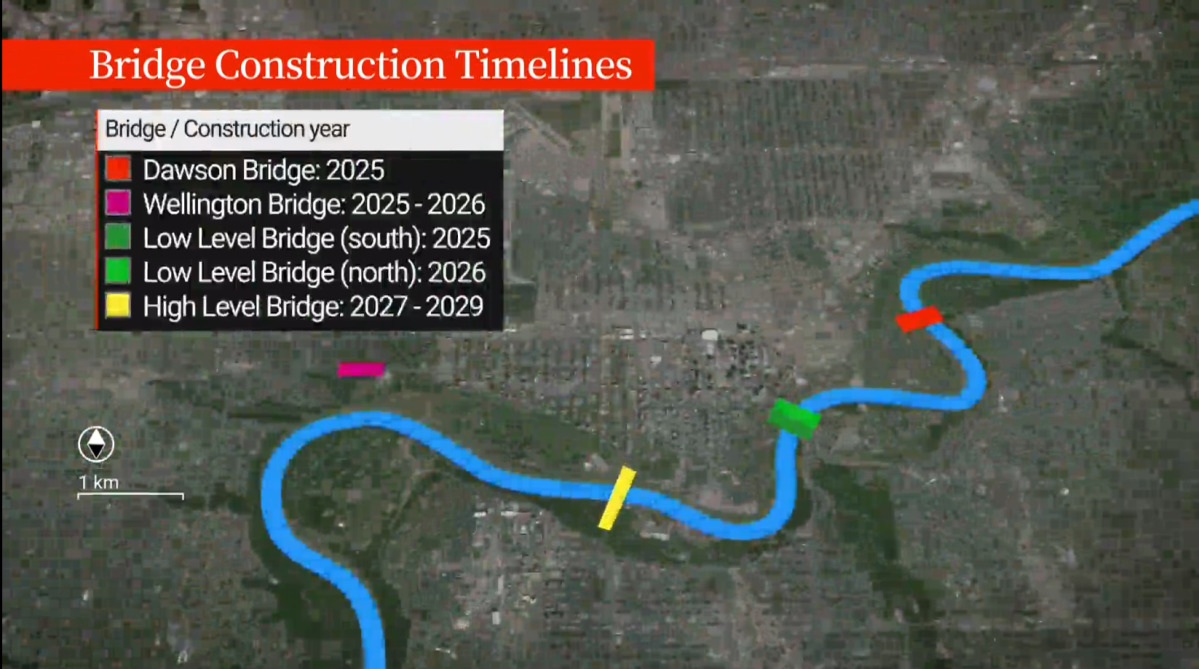
And this is only the beginning. Three more bridges are scheduled for repair over the next five years, with the High Level Bridge, which carries more than 27,000 vehicles daily, set to close in 2027. The City is even considering converting Walterdale Bridge to a temporary two-way span to alleviate congestion.
The result won’t just be years of traffic chaos but will be a massive blow to downtown business.
As an Op-Ed in the Edmonton Journal, authored by Puneeta McBryan and Chad Helm, members of Downtown Revitalization Coalition recently said: “Another devastating blow to downtown, just as things are starting to look up. Downtown is the heart of Edmonton’s business, tourism, arts, education, and innovation. Hundreds of head offices and businesses – small, medium, and large – are located here, employing tens of thousands.”
The decision to close these bridges threatens to disrupt the delicate balance of commerce, jobs, and growth that we have worked so hard to build.
We know that old bridges and roads need repairs. Keeping people and goods moving safely is important. But fixing everything at the same time will cause major traffic problems, making it harder for people to get to work, businesses to stay open, and the city to run smoothly.
However, we must do it in a way that doesn’t cripple our economy.
Transportation networks drive economic prosperity. We’re talking about the livelihoods of every resident, worker and business. Closing these bridges will disrupt the flow of goods, services, and people, leading to delays and inefficiencies that will reverberate throughout the entire region. Local businesses depend on efficient transportation to reach suppliers, serve customers, and maintain operations. By cutting off key access points, we’re putting local businesses in jeopardy, forcing them to deal with longer commute times, higher costs, and a loss of productivity that will stifle their ability to thrive.
From real estate to tourism, every sector will suffer.
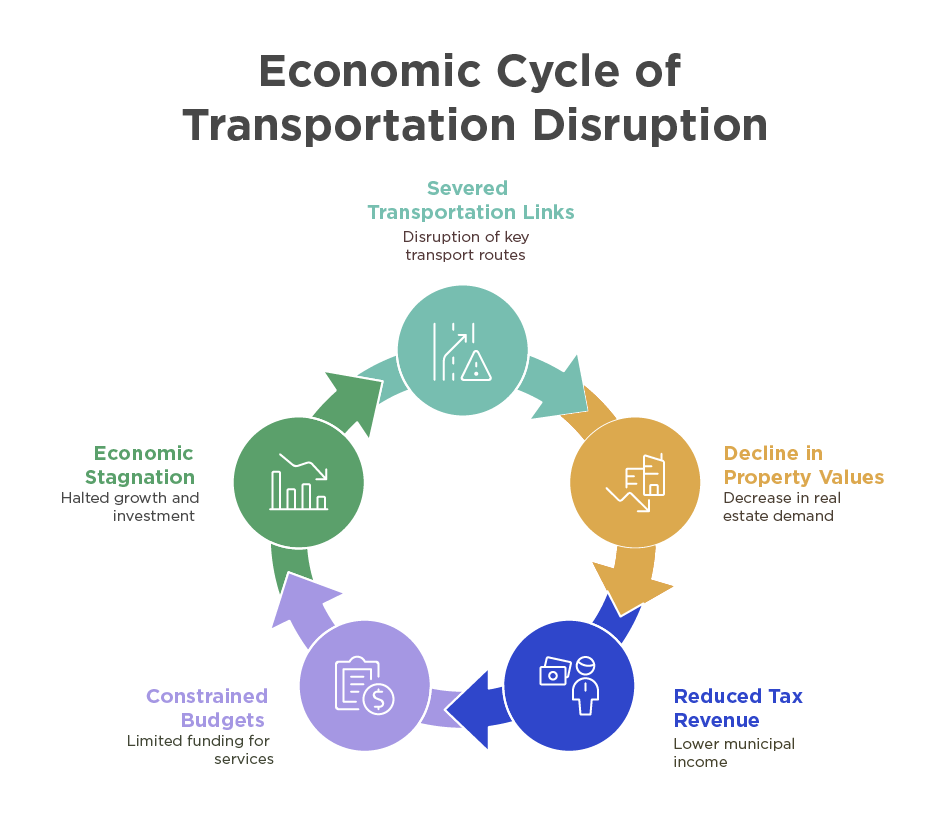
When transportation links are severed, property values take a hit. Families and businesses seeking convenient access to key parts of the city will look elsewhere, and demand for real estate will drop. A decline in property values directly reduces municipal tax revenue, constraining budgets for essential services and future capital projects. This creates a self-reinforcing cycle—reduced investment leads to further economic stagnation, making it more difficult to restore market confidence and long-term growth.
Edmonton’s tourism and hospitality sector contributes nearly $2 billion annually, supporting thousands of jobs in hotels, restaurants, and entertainment. Infrastructure disruptions, such as bridge closures and roadwork, threaten visitor access, leading to lower hotel occupancy, decreased event bookings, and reduced spending. With the city expecting up to $3 billion in annual visitor spending by 2030, poorly timed construction could cost the economy hundreds of millions in lost revenue and stalled growth.
The City of Edmonton’s economy is in a precarious position. While the region is doing well, the city itself is under-performing financially. One of the best ways to improve life for residents while supporting social programs is to prioritize the economy. That means finding a safe solution for commuters while ensuring the downtown core remains a convenient destination for residents.
Our economy needs to keep moving – that's the bottom line. Shutting down multiple key routes at once isn’t just an inconvenience; it’s an economic risk we can’t afford. Poor planning today will have lasting consequences, driving up costs, slowing growth, and making it harder for businesses to succeed. The City needs to develop a smarter approach—one that balances infrastructure upgrades with economic stability. Let’s keep Edmonton connected, competitive,
Let’s keep our economy moving.
Have your say.
The Edmonton Chamber wants to hear from you. What are the top issues and priorities for your business? Start the conversation by writing to policy@edmontonchamber.com

